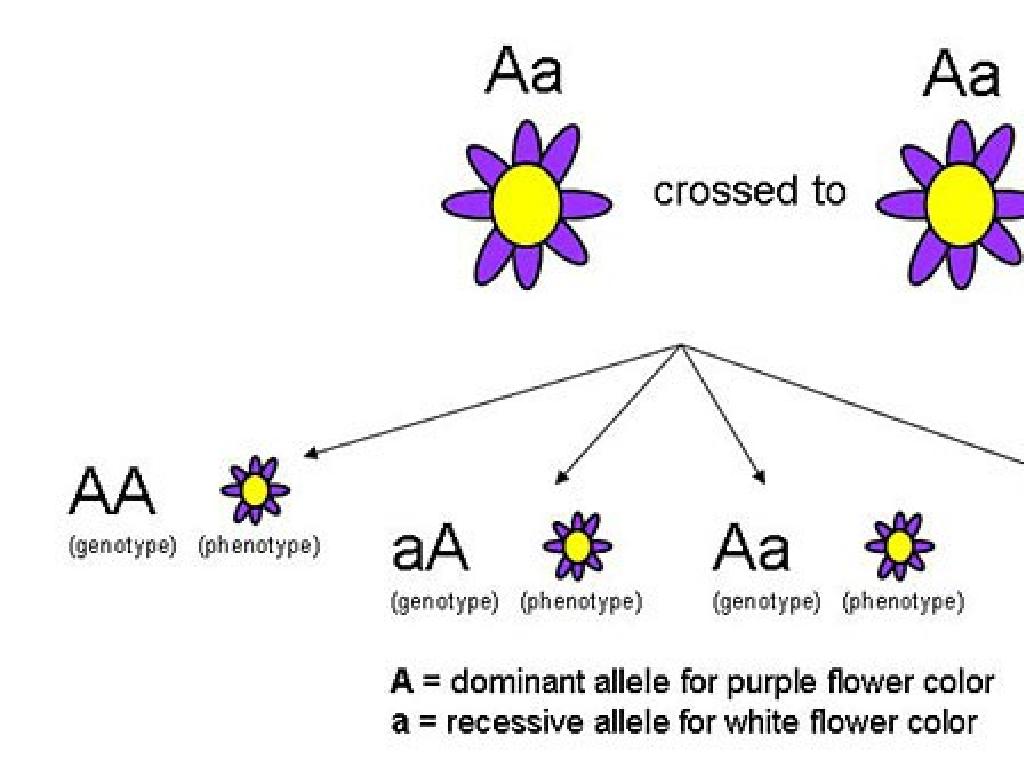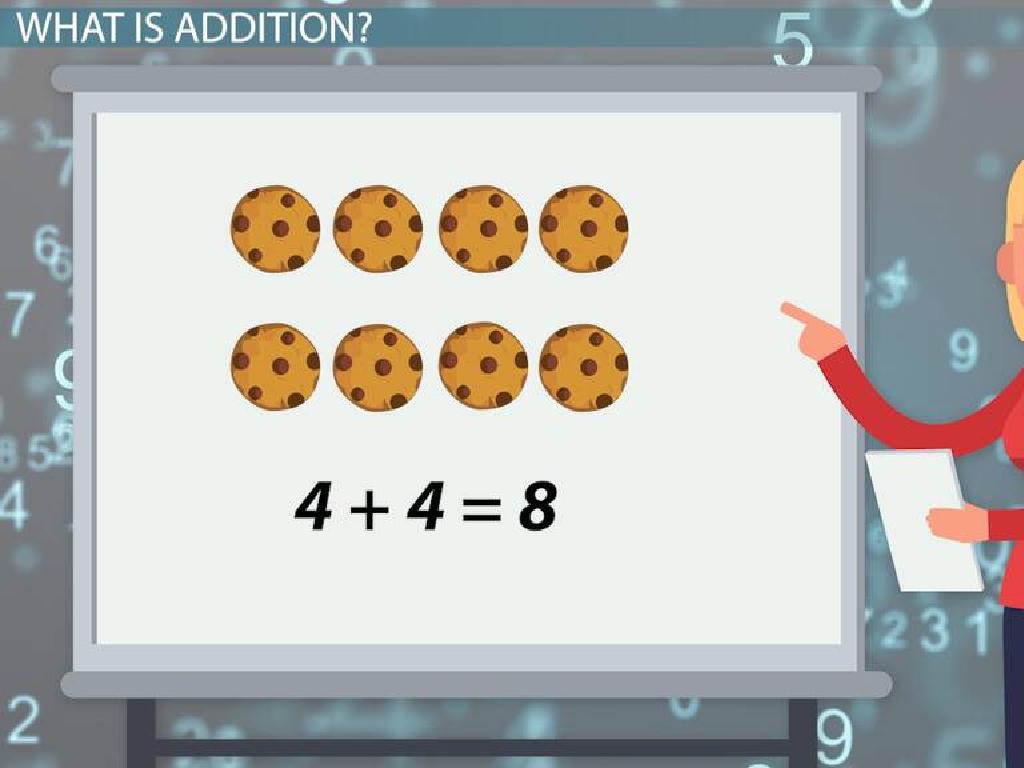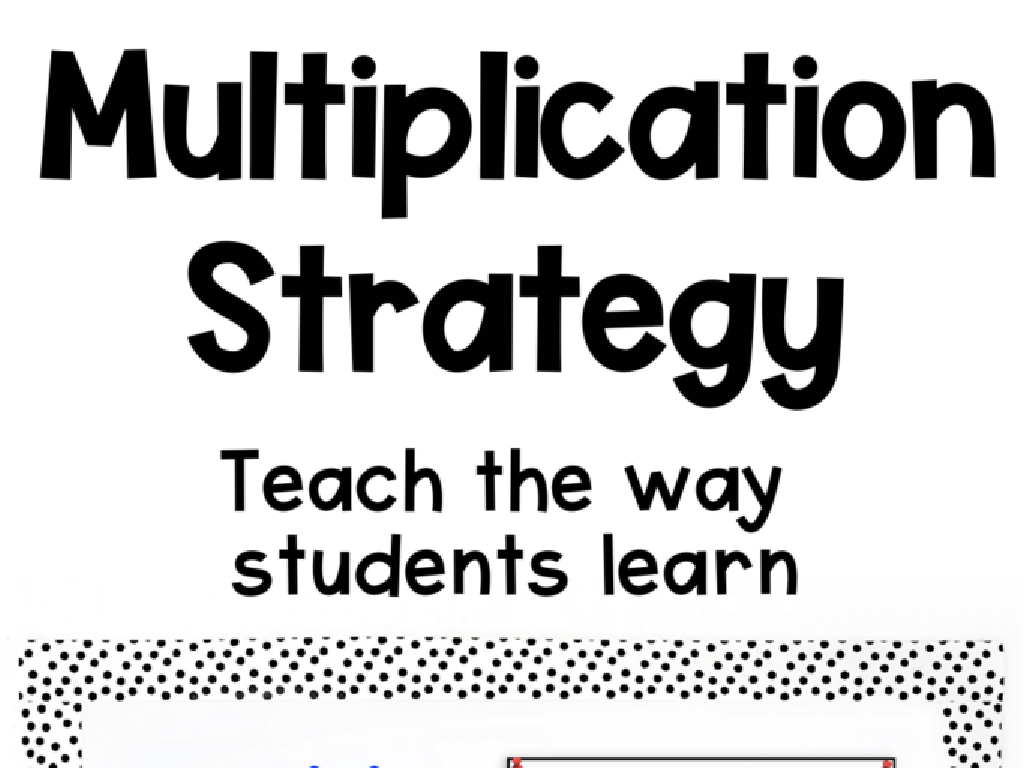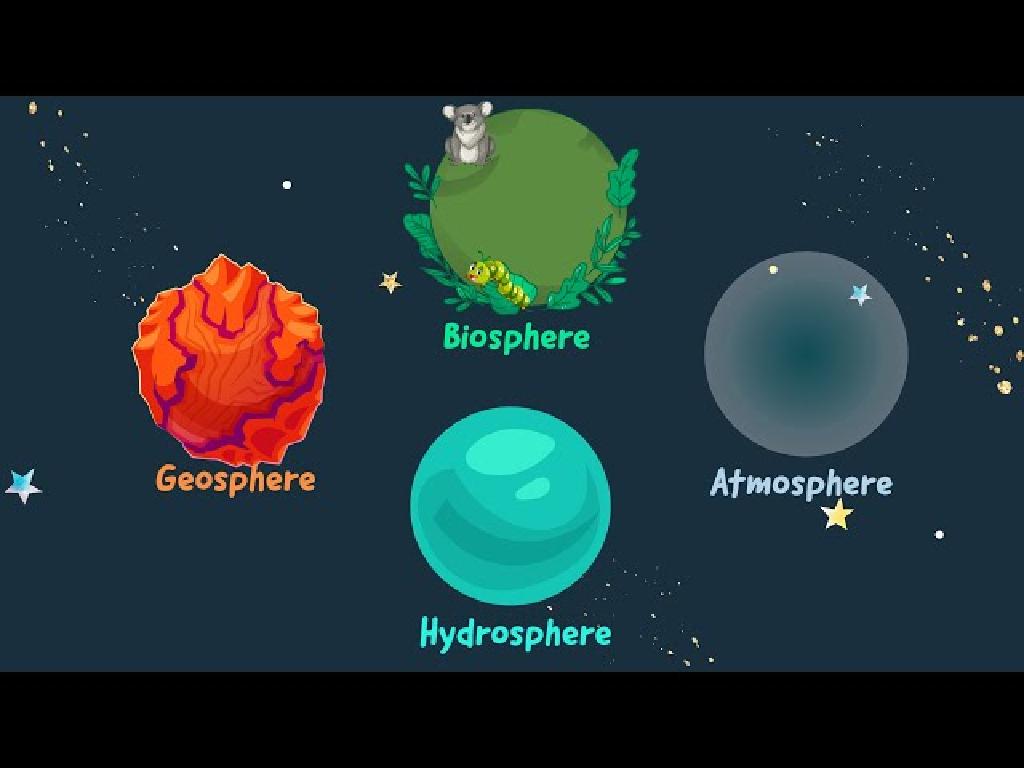Area Of Figures On Grids
Subject: Math
Grade: Fifth grade
Topic: Area
Please LOG IN to download the presentation. Access is available to registered users only.
View More Content
Welcome to Area Exploration!
– Area measures space within a shape
– Area’s role in daily life
– Examples: Buying carpet for a room, planting a garden
– Review: Area definition
– Area is the amount of space inside a 2D shape, measured in square units
– Activity: Find areas on a grid
|
This slide introduces the concept of area to the students, emphasizing its practical applications in everyday life, such as determining the amount of carpet needed for a room or the size of a garden. Begin with a quick review of what area is, ensuring that students recall that it’s the measure of space inside a two-dimensional shape, expressed in square units. Engage the class with an activity where they find the area of various shapes on a grid, which will help them visualize and better understand the concept. Provide guidance on counting the squares within the shapes to calculate the area and encourage students to discuss how they might use area calculations in real-life scenarios.
Understanding Grids for Area Measurement
– Grids consist of intersecting lines
– Imagine a checkerboard with equal squares
– Grids assist in measuring area
– Like a checkerboard, we use grids to count space
– Count squares to determine area
– Count full squares inside a shape on the grid
– Each square equals one unit
|
Introduce the concept of a grid to the students, explaining that it is composed of horizontal and vertical lines that create squares, similar to a checkerboard. Emphasize that these grids are tools that help us measure the area of a shape by counting the number of squares it covers. Each square on the grid represents one square unit of area. Ensure students understand that only full squares are counted when measuring the area on a grid. Use visual aids to demonstrate how to count the squares within various shapes on a grid. Encourage students to practice with different shapes to become comfortable with the concept.
Calculating Area of Rectangles
– Area formula for rectangles
– Area = Length x Width (l x w)
– Count squares on the grid
– Each square on the grid represents 1 square unit
– Example: 4×3 rectangle area
– A rectangle that is 4 units long and 3 units wide has an area of 12 square units
|
This slide introduces the concept of finding the area of rectangles using the formula Area = Length x Width. Students should understand that the area represents the amount of space inside the rectangle. By counting the squares on the grid, they can visually confirm the area they calculate using the formula. The example provided will help solidify their understanding by applying the formula to a concrete case. Encourage students to practice with different sized rectangles on grid paper to become comfortable with the concept.
Calculating Area of Irregular Shapes
– Break down into smaller shapes
– Divide the shape into rectangles/squares
– Calculate area of each shape
– Area of a rectangle = length x width
– Add areas for total area
– Sum the areas of all smaller shapes
|
This slide introduces the concept of finding the area of irregular shapes by breaking them down into smaller, manageable rectangles or squares. Start by explaining how to visually divide an irregular shape into known shapes. Then, guide students to calculate the area of each smaller shape using the formula for the area of a rectangle (length x width). Finally, instruct them to add the areas of all the smaller shapes together to find the total area of the irregular shape. Provide examples on the grid and work through them as a class. Encourage students to practice with different shapes to gain confidence.
Area of Combined Shapes
– Understand overlapping shapes
– Calculate area of complete shape
Imagine the shape is whole, without overlaps or gaps
– Subtract area of missing parts
Deduct the space that’s not part of the actual shape
– Find total area accurately
|
When dealing with combined shapes, students should first visualize the shape as a whole, ignoring any overlaps or gaps. Then, calculate the area as if it were a complete figure. Next, identify and subtract the areas of parts that are either overlapping or missing to avoid counting them twice. This method ensures that the total area reflects the actual space the shape occupies. Use grid paper for practice, and provide examples with different combined shapes to help students understand the concept. Encourage them to explain their reasoning for each step to reinforce their learning.
Let’s Practice Together: Area Calculation
– Calculate area on grid paper
– Work in pairs for discussion
– Talk about how you count squares and multiply length by width
– Share your methods and results
– Explain your findings to the class and listen to others
– Reflect on different strategies
– Think about how different pairs solved the problem
|
This slide introduces a class activity focused on calculating the area of various shapes using grid paper. Students are to work in pairs, which encourages collaboration and communication. They should discuss how to count the squares within their assigned shapes or use the formula for area (length x width) if applicable. After completing the calculations, each pair will share their approach and the area they found with the class. This sharing session will allow students to learn from each other and understand different methods of solving the same problem. The teacher should circulate during the activity to offer guidance and ensure that each pair is on track. Possible shapes for the activity could include rectangles, triangles, and compound shapes made up of multiple rectangles.
Homework Challenge: Exploring Area on Grids
– Take home a grid worksheet
– Practice finding areas of shapes
– Count the squares inside each shape to find the area
– Be ready to present a problem
– Choose one shape to explain to the class
– Understand area calculation
– Area measures the space inside a 2D shape
|
This homework assignment is designed to reinforce the concept of area as covered in class. Students will take home a worksheet with a variety of shapes drawn on grids. They should practice calculating the area of each shape by counting the number of squares within the shape’s boundaries. Encourage students to work through each shape methodically and check their work. For the next class, they should be prepared to present how they found the area for one of the shapes. This will help them articulate their understanding and demonstrate their ability to calculate area. As a teacher, be prepared to offer guidance on how to count partial squares and reinforce the concept that area is a measure of space within a two-dimensional shape.
Class Activity: Area Scavenger Hunt
– Find classroom items to measure
– Estimate area using grid paper
– Count the squares inside the shape on the grid
– Record and compare measurements
– Share findings with peers for collaborative learning
– Discuss area’s real-life relevance
– How does knowing area help in daily activities?
|
This interactive activity is designed to help students apply their knowledge of area to real-world objects in their classroom. Provide each student with grid paper and instruct them to select various items around the classroom to measure. They should use the grid to estimate the area of each item by counting the full squares and estimating the partial squares within the item’s outline. After recording their measurements, students will compare results with their classmates to see if they got similar answers and discuss any discrepancies. Conclude the activity with a discussion on the importance of understanding area in real life, such as in home decoration, gardening, or construction. This will help students appreciate the practical applications of math outside the classroom.






